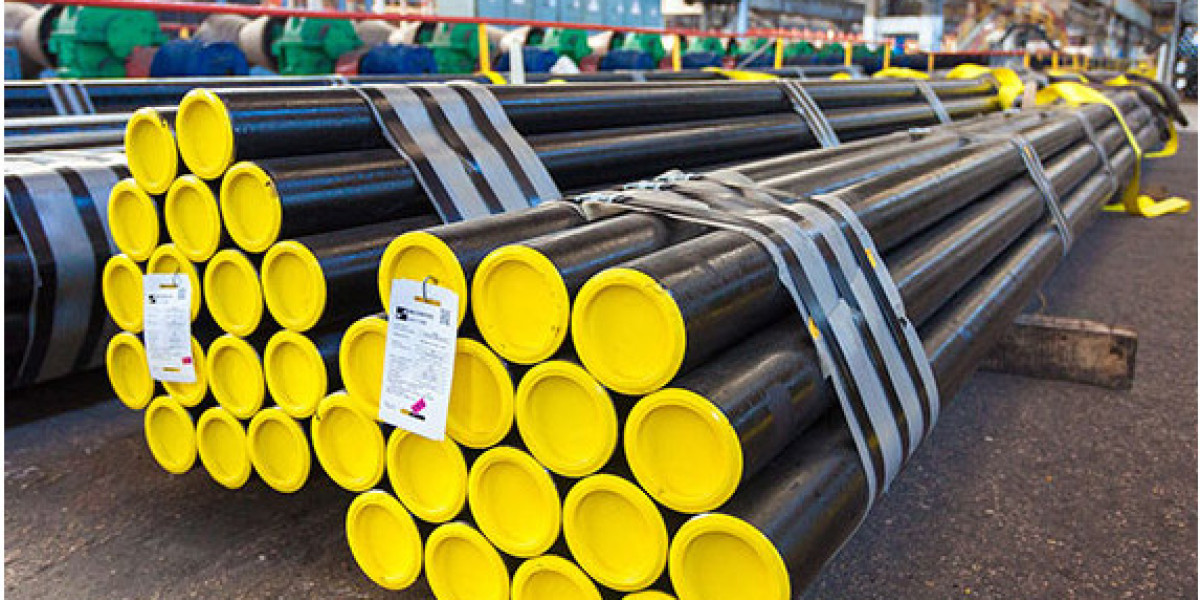The world that we know is changing quite fast. Industries are increasingly embracing sustainability and carbon emissions reduction. Even industries rooted in tradition are adapting to the call for change. One such industry is seamless pipe manufacturing.
The demand for seamless pipes is rising in the seamless pipe manufacturing process. Hence, manufacturers are in need of more eco-friendly and sustainable practices within the manufacturing process. Let us find out how pipe suppliers and manufacturers are embracing sustainability and striving to reduce carbon emissions.
Sustainability in seamless pipe production:
Seamless pipe manufacturing is a critical component of various industries. It has made substantial leaps in promoting sustainability. Here's how it is evolving to reduce its environmental impact:
- Energy efficiency and reduced carbon footprint:
One of the primary focuses in the seamless pipe production process is achieving energy efficiency. Manufacturers aim to reduce their carbon footprint by optimizing energy consumption. Sustainable practices in this area include:
- Seamless pipe manufacturers are increasingly investing in modern, energy-efficient machinery and technology. These advancements in the manufacturing process lead to reduced energy consumption. As a result, these lower operating costs and decrease carbon emissions.
- Some manufacturers are integrating renewable energy roots, like wind turbines and solar panels, for powering their facilities. They are transitioning to cleaner energy. Thus, these pipe fabricators are able to reduce emissions as well as decrease their reliance on fossil fuels.
- Recycled materials and circular economy principles:
Manufacturers often produce seamless pipes using recycled materials. They are emphasizing the use of recycled steel, reducing the need for virgin resources. Their practice aligns with the principles of a circular economy. A circular economy fosters the idea of reusing, refurbishing, and recycling existing products.
Some manufacturers produce stainless steel seamless pipes because of the material's recyclability. Stainless steel is one of the most common materials manufacturers repurpose. Stainless steel is such a versatile product that various industries use it. Hence, the chances of recycling stainless steel pipes are much higher than other piping materials.
Additionally, some pipe suppliers have adopted closed-loop systems. These systems allow them to minimize waste and maximize their resources. Such commitment to recycling conserves valuable materials and reduces the overall environmental impact.
- Emission control technologies:
Sustainability in seamless pipe production extends to emission control technologies. To mitigate the environmental impact, manufacturers employ various strategies:
- Some pipe producers are adopting carbon capture and utilization (CCU) technologies. These technologies capture carbon emissions and repurpose them in other processes. Manufacturers can reduce their overall emissions by utilizing these upgraded control technologies.
- Some seamless pipe manufacturers are investing in waste heat recovery systems. These systems arrest and reuse excess heat generated during the manufacturing process. The process reduces energy waste while cutting emissions.
- Sustainable packaging and transportation:
The journey towards sustainability does not end with manufacturing. It extends to packaging and transportation. Seamless pipe fabricators are mindful of their packaging materials and transportation methods. They aim to minimize their carbon footprint. Sustainable initiatives include:
- Manufacturers are shifting towards sustainable packaging materials. They are reducing the use of plastics and opting for recyclable or biodegradable alternatives.
- Improved logistics and transportation strategies also help minimize emissions during the distribution of seamless pipes. It involves optimizing routes, using eco-friendly transportation methods, and reducing the overall carbon impact.
The role of stainless steel:
Stainless steel seamless pipes are vital in the sustainability initiatives for manufacturers. Various industries favor stainless steel pipes because of the advantages they provide. Some of these advantages result in sustainability as well. Here is how they contribute:
- Stainless steel pipes are durable and reliable. Their extended lifespan means fewer replacements, reducing the overall environmental impact.
- The corrosion-resistant properties of stainless steel eliminate the need for additional coatings or treatments. It further minimizes the use of chemicals and their associated environmental costs.
- Stainless steel is highly recyclable, as mentioned earlier. At the end of their life cycle, manufacturers can recycle and repurpose stainless steel pipes. Thus, using stainless steel in the manufacturing process contributes to a circular economy.
A sustainable future:
The seamless pipe manufacturing process is evolving, aligning itself with the global call for sustainability and carbon emissions reduction. From energy-efficient practices to using recycled materials and advanced emission control technologies, manufacturers are leading in adopting eco-friendly initiatives.
Stainless steel pipes, the linchpin of many industries, are integral to these sustainability efforts. They are long-lasting, corrosion-resistant, and recyclable. These features make them one of the critical components for a more sustainable future in the manufacturing process.















